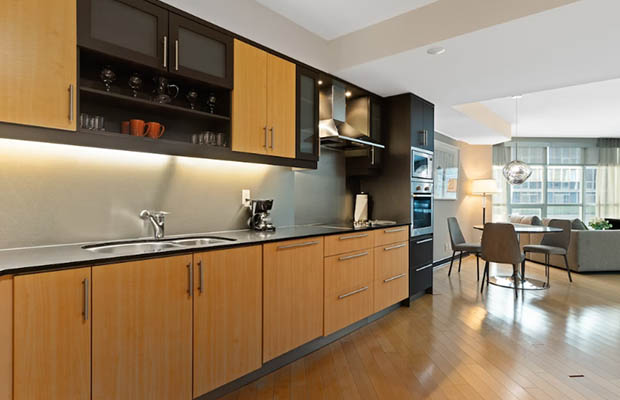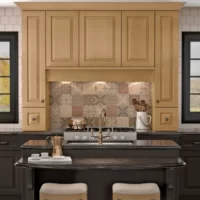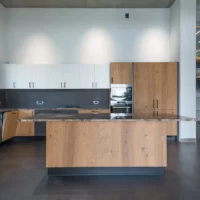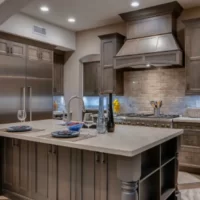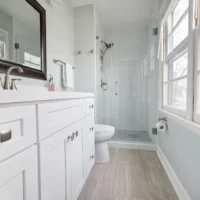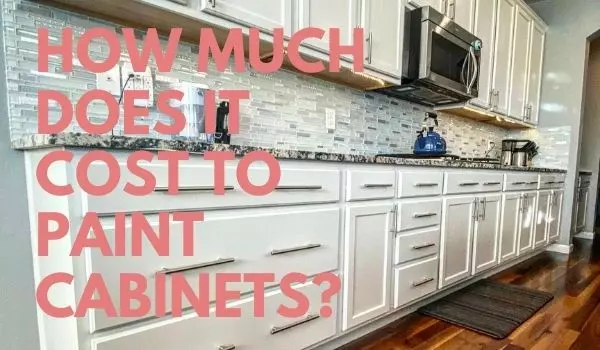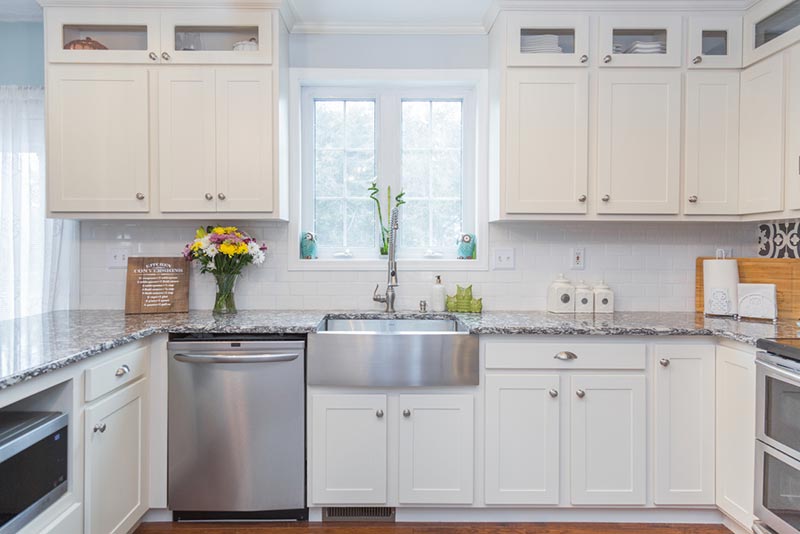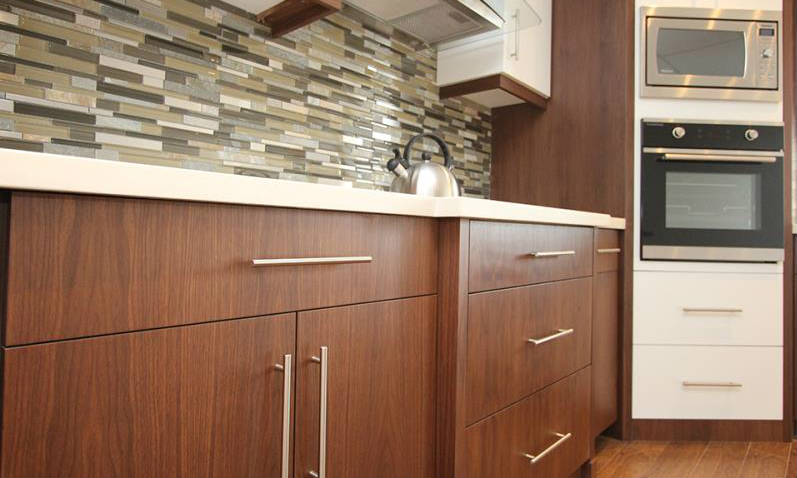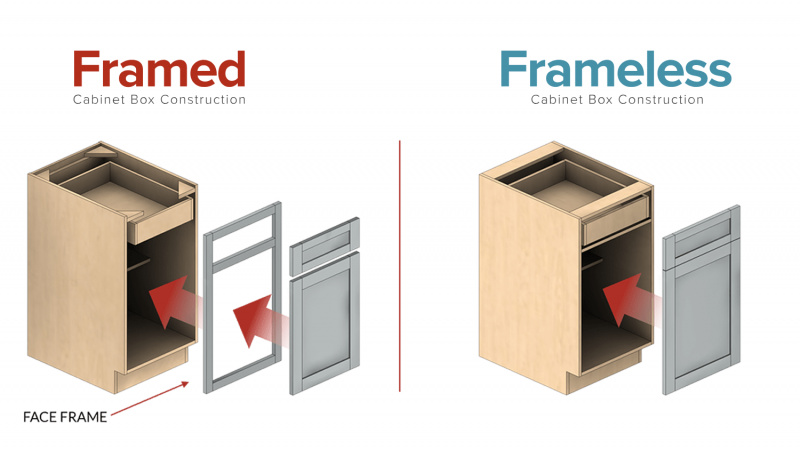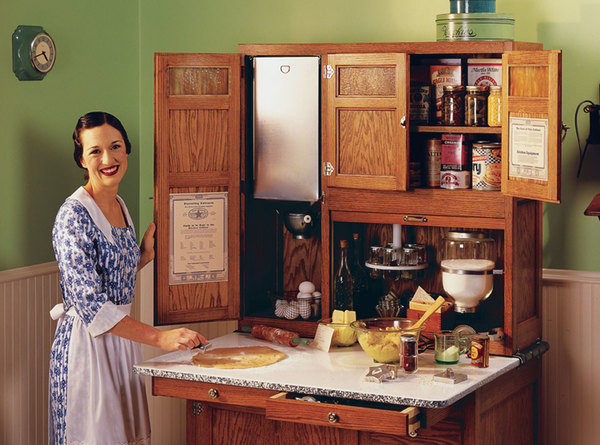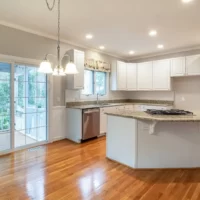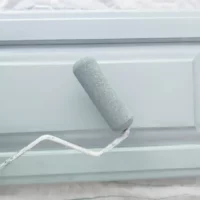At a fraction of the cost of custom cabinet renovations, refacing your kitchen cabinets is a great investment to boost the value of your house and enhance its appearance overall. Utilizing the best wood for kitchen cabinet doors is essential if you want your cabinets to look their best and last longer.
The use of cabinets will keep your room organized and add serious style. It can be challenging to decide which type of wood is best for your cabinets or to comprehend the advantages of each type.
We have provided a list of the best options for your consideration to assist you in making the best wood decision for your cabinet doors. Keep reading!
Also Read: Best Cabinet Locks
Table of Contents
Best Wood List For Cabinet Doors
- 1. Poplar
- 2. Hickory
- 3. Maple
- 4. Pine
- 5. Oak
- 6. Mahogany
- 7. Beech
- 8. Birch
- 9. Walnut
- 10. Spruce
- 11. Cherry
- 12. Ash
- 13. Douglas Fir
- 14. Bamboo
- 15. Plywood
- 16. Alder
Best Wood For Cabinet Doors Review
1. Poplar
The best wood for cabinets to use for painting is poplar. It is inexpensive and very simple to mill and cut. Your cabinets take on a distinctive look thanks to the poplar’s uniform texture.
Despite being a hardwood, poplar is softer than most woods and is a member of the soft hardwood family. As a result, poplar is highly workable and easy to nail and screw with. Beginners in woodworking will also benefit from using poplar.
Poplar is the best choice for you if you’re willing to paint the cabinets. It readily accepts paints and lets you choose any color. Poplar cabinets come in a wide range of colors, and the natural finish doesn’t complement them well. Poplar, on the other hand, is incredibly porous and absorbs paints like a sponge. To regulate the rate of absorption, an additional primer is needed.
Due to the nature of its fiber structure, poplar does not take stains well. If you use stain on Poplar cabinets, be sure to follow the correct procedure to avoid getting a randomly blotchy, dull surface.
Applying a sealer or other protective layer is essential to keep your cabinets in good condition for many years because poplar has a low dent resistance.
Poplar’s less dense annual rings contribute to its poor dimensional stability. Poplar tends to warp and twist with environmental moisture and humidity because of its weed-like fiber structure. Poplar is therefore not a good material for bathroom cabinets.
Considering that poplar tends to fuzz up while being sanded, make sure to use fine-grit sandpaper.
Pros
- High workability
- Easy to paint
- Affordable
Cons
- Poor weather resistance
- Poor dimensional stability
- Too soft
- Susceptible to dents and scratches
2. Hickory
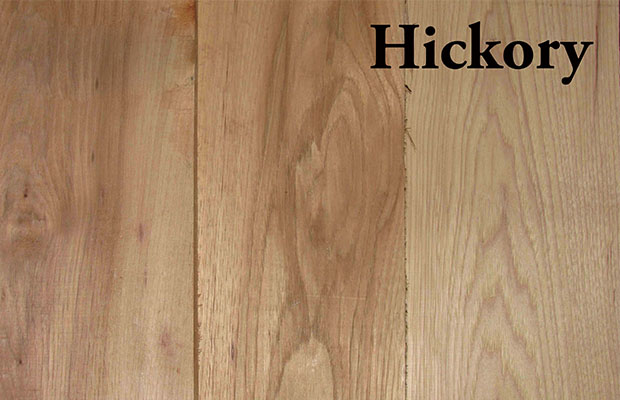
With a wide range of hues from white to reddish-brown, hickory has a naturally contrasting appearance. Hickory cabinets’ color can therefore be easily matched to that of other pieces of furniture.
Compared to Oak and Maple, hickory is more durable, resilient, and strong. Heavy objects can be held with minimal damage. The cabinets’ flame-like grain pattern gives them a rustic, unpretentious appearance.
Hickory is a very strong hardwood, but it has poor water resistance. Hickory cabinets cannot be installed in a bathroom or other moist environments. It is not advised to use hickory for bathroom cabinets.
Hickory is widely available and is simple to stain in a range of hues, from dark to light.
It is not very resistant to dents and scratches. Hickory cabinets require a lot of maintenance as a result. To keep Hickory looking new and fresh, use a mild dishwashing detergent soaked in warm water. Never use harsh chemicals for cleaning that contain silicone or bleach.
Hickory poplar is ideal for cabinets because it has high compressive, flexural, and hardness strengths. But it is expensive.
Pros
- High strength
- Easy to paint
- Easy to stain
Cons
- Expensive
- Poor water resistance
- Too soft
- Susceptible to insect attacks
3. Maple
Cabinets are frequently made out of maple, a hardwood with smooth wood grain and an unporous fiber structure.
Hardwood made from maple is strong and long-lasting. Considering all of Maple’s wonderful characteristics, painting, and staining it is much simpler than most other types of wood. As a result, maple cabinets can be painted any color you like.
Maple cabinets can easily last for decades if you maintain them properly and on a regular basis. It can be changed however we like because it is a versatile and adaptable wood. Maple cabinets can have lighter or darker colors and can have a contemporary or traditional appearance. Maple cannot be used as a cabinet material in any circumstance.
Cherry and walnut are more expensive than maple. it is affordable and well worth the price. One of the best woods for cabinets is maple, which has high availability, durability, and versatility.
Due to their extensive UV exposure, maple cabinets can turn yellow over time. Applying a stain, sealant, or another UV-blocking protective layer will therefore help prevent the yellowing and damage that UV rays can cause to your Maple cabinets.
There are primarily 2 types of maple that we frequently use for cabinets. They are,
- Hard Maple
- Soft Maple
Pros
- Easy to stain and paint
- High durability
- Resistant to warping and shrinkage
Cons
- Can get yellow when get exposed to the sunlight over years
- Susceptible to insect attacks
- Poor wear and tear resistance
4. Pine
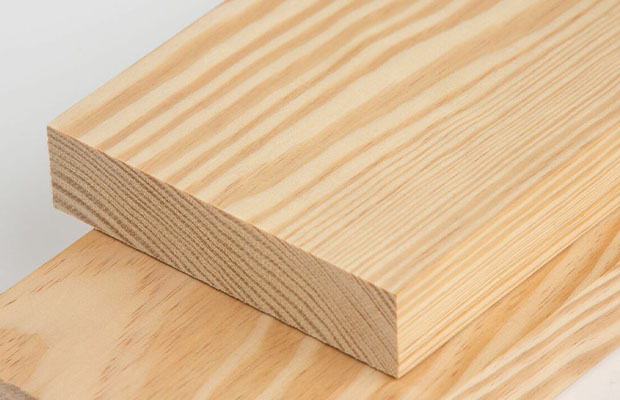
Pine is considered one of the best wood for cabinets because of its country, rustic appearance, and the best cost-effective option. Because of their smooth texture and gentle amber color, pine wood cabinets are gorgeous. Pine wood’s golden hue gives the cabinets a bright, inviting feel.
Softwoods like pine make for incredibly simple work. It works well for carving unique cabinets. Thus, pine wood is a great choice for cabinetry if you are a beginner in woodworking. On the other hand, Pine is prone to dents and scratches because it is so soft. But if you take care of your Pine cabinets, you can easily avoid that.
Painting, staining, screwing, and nailing pine wood is simple. Pine wood’s slick surface holds paint so well. Long-term use of pine wood with a natural finish will eventually result in a lovely patina that gives your cabinet a distinctive appearance.
White Pine and Yellow Pine both perform well in humid environments due to their high moisture resistance. Cabinets for the kitchen and bathroom should be made of pine.
Pine has numerous distinctive knots that alter the cabinet surface uniquely along with other markings. As a result, look closely for knots when choosing Pine for your cabinets.
Pine wood is an excellent investment. It costs less than Mahogany, Oak, Cherry, Maple, and Cherry.
Without a doubt, Pine is one of the best woods I’ve ever worked with for cabinets with a rustic, vintage look.
Pros
- High workability
- Easy to paint and stain Need high maintenance
- Beautiful rustic
- Lightweight
- Affordable
- Has good moisture resistance
Cons
- Poor durability
- Need high maintenance
- Susceptible to dents and scratches
- Tear up easily
5. Oak
Cabinets look fantastic when made of oak. It has a lovely wood grain that gives your cabinets a distinctive appearance. The warmth and coziness of oak woodgrain are overwhelming.
Oak cabinets last a very long time. They give your cabinets a farmhouse, modern, or rural appearance.
Oak is a hardwood with exceptional hardness, compressive strength, and flexural strength. Oak cabinets are thus very strong, durable, and extremely stable. Unlike Pine, oak has good resistance to nicks and cracks. It can withstand damage without losing its dimensional stability.
Oak cabinets can support heavy objects due to their strength and weight. With confidence, you can put heavy objects inside your oak cabinets. Sanding the cracked or damaged area makes repairing oak cabinets simple.
Additionally, oak wood can be used for kitchen and bathroom cabinets because of its good water resistance. Oak is therefore a fantastic material for cabinets in the kitchen and bathroom.
Stains and sealants go on oak easily. It is a durable solid wood that can be customized. Oak has a long lifespan because it is strong, water-resistant, durable, and made of hardwood. Additionally, oak is a safe alternative and contains no harmful chemicals.
Pros
- Sturdy
- Excellent strength
- Easy to finish and stain
- Withstand heavy loads
- High dimensional stability
- Easy to repair
Cons
- Heavy and difficult to move
- Darken over time
- Expensive
- High tannin content
6. Mahogany
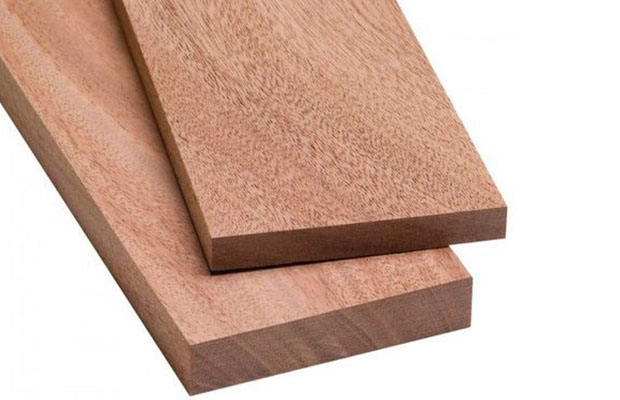
Because of its straight wood grain, exceptional strength, and high cost, mahogany is a type of luxury wood for cabinets. Due to its limited availability and high cost, mahogany is rarely used for cabinets.
but One of the most exquisite woods for cabinets is mahogany. It has a deep red color surface that glows when properly polished. You don’t need much wax to enhance its appearance because it has a glossy surface and a straight grain.
The shine that Mahogany gives after polishing it up and cared for with regular maintenance,
can’t achieve with any other wood. Simply put, mahogany is a type of wood that is challenging to replace, and cabinets made from mahogany are easy to recognize due to the wood’s highlighted features and appearance.
The best strong and long-lasting hardwood is mahogany. It resists rot and endures for decades with proper maintenance.
Mahogany ages with a darker, richer color. Most people enjoy the opulent appearance of mahogany, which gives your cabinets a fresh feel and appearance. To obtain the darker color more quickly, you can add finishes. Great wood for cabinets is mahogany.
Pros
- Need less maintenance
- High durability
- Strong and sturdy
- High water resistance
Cons
- Expensive
- Hard to find
- Heavy
7. Beech
One of the best hardwoods that is frequently used for cabinets is beech. In the cabinet manufacturing sector, beech is a high-quality grade.
The texture and grain of beech are exquisite. Beech has excellent finishing qualities, making painting and sealing simple. Beech is one of the best woods to use for cabinets if you’re just starting out in woodworking and are looking for hardwood.
Beechwood accepts stains well and is easily worked with woodworking tools. Beech cabinets can be painted any color you like because they make it possible to affordably achieve your preferred style.
Beech wood’s weight is the only drawback. In addition, beech gives your cabinets a strong, rigid, and elegant appearance.
Beech cabinets can support heavy objects without chipping, cracking, or harming the wood itself since the wood has exceptional compressive and bending strength.
Beechwood does not resist moisture as well as many other hardwoods, so you should properly paint, stain, or seal the wood before putting a Beech cabinet in a humid environment. As an alternative, moisture can cause Beechwood to twist and warp.
Pros
- Strong
- High workability
- Easy to paint and stain
- Able to hold heavy items
Cons
- Heavy
- Poor moisture resistance
- Susceptible to insects and pests
8. Birch
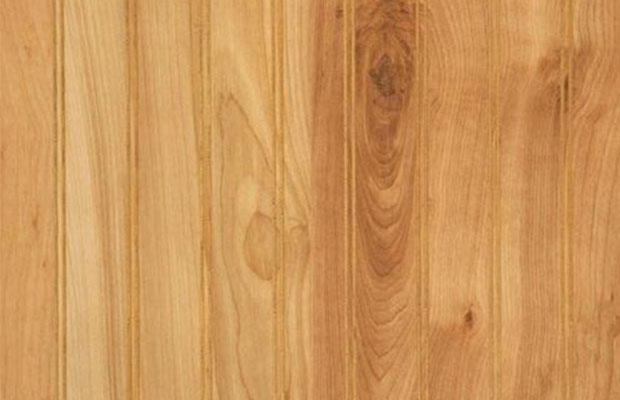
Birch is a fantastic wood for cabinets because of its high tensile strength and durability. Your beloved cabinets will look more beautiful thanks to their light brown or golden color.
Birchwood offers a modern, farmhouse, and contemporary look for kitchen cabinets.
Porous fibers make up the wood of birch. It can therefore quickly take stains and transform into the style you want. Due to its excellent finishing qualities, it is simple to paint, stain, and seal.
In my experience, Birch looks great with lighter wood stains that create a uniform, smooth surface. Because a darker mixture of wood stains may cause the wood to become uneven and discolored.
Birch, on the other hand, has an uneven texture that can quickly become blotchy when the stain is applied. To prevent random blotches and streaks, pre-stain wood conditioner must be applied before staining Birch cabinets.
Pros
- Easy to stain and paint
- Dent and scratch-resistant
- Modern look
Cons
- Uneven texture can result in a blotchy surface
- No moisture resistance
- No weather resistance
9. Walnut
Custom-quality cabinets are frequently made of walnut. It is a hardwood with a high Janka hardness rating of 1,010 lbs, which is higher than most other woods.
Walnut is incredibly resilient to dents and scratches due to its hardness and density. As a result, walnut tables and cabinets can support heavy objects without the wood becoming damaged. For cabinets, walnut is the ideal wood.
Walnut also resists water well. It can therefore be used to create bathroom cabinets. However, since wood is naturally porous and not as water-resistant as synthetic materials, I strongly advise using a protective sealer.
Walnut cabinets can be cleaned without worrying about leaving stains or other impurities. Therefore, maintaining Walnut cabinets is much simpler than maintaining Birch wood cabinets.
Walnut is able to give luxurious look to your cabinets because of its fine wood grain and most importantly it has intricated grain style and dark color swirls of color that cannot be found in any other wood that use for cabinet making. Walnut cabinets are highlighted and distinctive by these beautiful features.
Because Walnut has excellent finishing qualities, staining and painting it is simple. Natural stains give it a rich, cozy appearance. Age causes the darker hues of walnut cabinets to become lighter. It produces a lovely aesthetic for home interiors.
Pros
- Easy to stain and paint
- Eco-friendly option
- High durability
- Water-resistant
Cons
- Expensive
- Difficult to install
10. Spruce
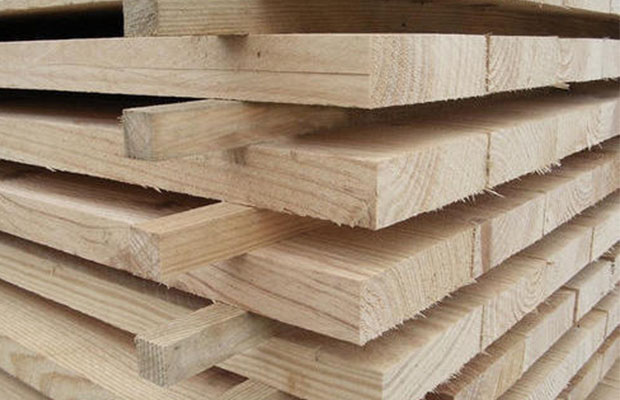
A strong softwood that works best for cabinets is spruce. The wood has a high hardness rating and a straight grain. Spruce cabinets are therefore primarily used in stores and garages.
Although spruce is a light wood, it has one of the highest strengths-to-weight ratios of all the different types of wood. Spruce cabinets are therefore extremely strong despite being lightweight.
The creamy white color of spruce cabinets gives them a contemporary, attractive appearance. Spruce has higher dimensional stability and can be used as a material for industrial cabinets because it has fewer knots than other wood types, like Pine.
Due to the wood’s ease of use, spruce cabinets are long-lasting. Spruce’s user-friendliness makes it possible for anyone, even a novice woodworker, to learn the principles of cabinetmaking.
Spruce takes stain so well and is simple to finish and glue. As a result, you can guard against water damage if you’re working on a bathroom cabinet application or outdoor cabinet.
Pros
- Lightweight
- High flexibility
- High strength to weight ratio
- Affordable
Cons
- No decay resistance
- Less durability
11. Cherry
Your cabinet gains a distinctive aesthetic look thanks to cherry wood. Its closed-grain wood structure has a lovely reddish-brown texture.
There are many pins, curls, and knots in Cherry wood, which has varied wood grain. it is a traditional type of wood, and you can get a classical appearance with Cherry cabinets that can be customized for modern homes as well because it is a wood that is incredibly adaptable.
Cherry ages over time by becoming darker from exposure to sunlight. So, make sure to apply stain, sealer, or any other protective layer that has sunblock agents to prevent the wood from getting darkened.
Cherry wood is incredibly simple to paint and stain, and you can easily achieve the desired smooth finish with fewer finishing mistakes. Because of its welcoming qualities, Cherry is a great wood to start with even if you are a beginner in woodworking.
Cherry cabinets have a cozy, inviting appearance. Cabinets made of cherry that has been glazed can give a traditional appearance while preserving the darker stain. As Cherry wood ages and darkens, the reddish undertones make them shine more. One of the best woods for cabinets is this one.
It’s very easy to work with cherries. Excellent gluing, nailing, polishing, and screwing properties make it a valuable tool for cabinet makers.
Pros
- Excellent finishing properties
- Lightweight
- High workability
- Give a nice rich look with age
Cons
- Expensive
- Poor resistance against dents and scratches
12. Ash
Ash is one of the best, most affordable options for cabinets. It is evergreen and is easily customizable to improve the appearance and wood grain. it is aesthetically pleasing and excellent for cabinets with beautiful designs.
The strength of ash allows it to support heavy objects without cracking or chipping. Ash is suitable for any type of cabinet due to its capacity for handling heavy loads.
Ash wood is very simple to stain, paint, and seal. With a good finish, it presents an appealingly distinctive appearance. Ash is the wood for you if you are more detail-oriented.
Ash can withstand shock. The majority of the shock force will be absorbed by the wood itself, protecting it from splitting and cracking if heavy objects strike your Ash wood cabinets hard.
Despite the fact that the majority of hardwoods are heavy and difficult to move, ash is surprisingly light, and it can be easily shaped and carved without any problems.
Ash wood is a green option because it doesn’t release any harmful chemicals.
Pros
- High hardness
- High durability
- Strong and sturdy
- High workability
Cons
- Need high maintenance
- Flammable than most woods
- Less availability
13. Douglas Fir
The cabinet industry uses Douglas Fir, a strong solid wood, frequently. The fiber structure gives it strength despite being a softwood.
A lot of kitchen cabinets are made of douglas fir. It has fire resistance and is heat-resistant for use in the kitchen. It is the ideal wood for kitchen cabinetry.
Douglas fir is not as durable as hardwoods. However, Douglas Fir cabinets can easily last for years with proper finishing and routine maintenance.
Because of its high machinability, Douglas Fir can be easily fastened with screws, nails, and glue. With Douglas Fir, even a beginner in woodworking can learn how to make cabinets.
Depending on its age, Douglas Fir has a light brown color. Your cabinets will have a distinctive aesthetic appearance thanks to its straight grain pattern and medium to coarse texture.
In the end, Douglas Fir is the ideal material for cabinets. It is a softwood with low workability that is lightweight.
Pros
- Chemical-free
- High flexibility
- Decay resistant
- Affordable
Cons
- Poor rot resistance
- Low hardness
- Susceptible to insect attack
14. Bamboo
Bamboo has a very high compressive and tensile strength. It is one of the most popular types of wood for cabinets. Bamboo kitchen cabinets have the best strength-to-weight ratio. This is why it is so strong considering its weight. It could be regarded as the ideal wood for cabinets.
High structural integrity and stress tolerance are two qualities of bamboo. So heavy items can be stored in bamboo cabinets without causing the wood to split or chip. Bamboo is highly resistant to dents, chips, cracks, and splits.
Its straight grain is distinctive, with knuckles and nodes that stand out. Although it is softer than most hardwoods, its strength is unrivaled.
Bamboo gives your cabinets a natural, fresh, warm appearance with a neutral color. It is available in two shades: white and honey.
Bamboo is simple to stain. It is extremely stain-resistant, and bamboo is compatible with the majority of water-based stains. To dents and scratches, the wood itself is resistant. Therefore, bamboo cabinets have a very high level of durability.
Budget-conscious woodworkers have an affordable choice in bamboo. Bamboo is very much worth the cost is given all of its great qualities.
Pros
- Versatile
- High durability
- Strong
- Water resistance
Cons
- Susceptible to deterioration
- Different quality variations
- Hard to work with
15. Plywood
There are now homes with plywood-built cabinets, kitchen furniture, and bathroom furniture. The strength and durability of plywood cabinets rival those of solid wood. It is one of the best woods for cabinets and is occasionally stronger.
The frameless cabinets that are popular in Europe are often made of plywood. Cabinets made of plywood are used not only for home interiors but also for building.
Double the number of plies, an extremely smooth finish, and good lamination are all features of cabinet-grade plywood. Plywood cabinets are strong and offer good resistance to scratches because of the protective layer and numerous plies they contain.
It is portable and simple to install. Therefore, there is a very low chance of handling and installing plywood cabinets incorrectly.
The plywood species of birch, pine, and maple should not be stained. They have a high likelihood of developing random blotchy surfaces and streaks and are challenging to stain. They are incredibly dense and hard. These types of wood are difficult for stain pigments to penetrate, and it is challenging to provide an even tone throughout the plywood.
Before selecting the best plywood for cabinets, be sure to consider the following factors.
- Flatness of Plywood
- Edge thickness
- Graining pattern
- Damages
- Avoid subgrade core materials
- Look for curves
Pros
- High stiffness
- Comes in many sizes and thicknesses
- Extremely strong
Cons
- Less durability
- Difficult to sand and paint
- Susceptible to water damages
16. Alder
Alder is the best wood for cabinets to use if you want a material that has qualities of both hardwoods and softwoods. Alder is a member of the hardwood family, but despite this, it is incredibly soft and highly workable with woodworking tools.
It is a hardy wood with a straight grain and an evenly smooth texture that gives your cabinets a distinctive look. Because of its rustic natural beauty that elevates the caliber of the woodwork, knotty alder is a preferred material for cabinet doors among woodworkers.
Alder is a beautiful wood with a wide range of finishing options. Alder cabinets can be made to match your kitchen, office, dining room, or bathroom.
However, Alder is prone to damage because it is too soft. Poor scratch and dent resistance is present. Therefore, it is best to avoid putting heavy objects on Alder cabinets because they might cause the wood to split and chip.
Alder wood can be painted and stained with ease. Without leaving blotches or streaks at random, it will stain uniformly. However, if the surface of your Alder wood shows blotches after staining, it is preferable to sand it down, apply pre-stain wood conditioner, and then proceed with the staining.
Pros
- Beautiful appearance
- High workability
- Easy to stain and paint
- Eco-friendly option
Cons
- Prone to scratches and dents
- Poor hardness
- Too Soft
Tips In Choosing The Best Wood For Cabinet Doors
If you don’t have any experience with home renovations or don’t know what to look for, choosing the best cabinet door materials may leave you feeling lost. When you work with American Wood Reface, we’ll make sure your cabinets are made out of the proper materials. Our experts can select the best material to fit your kitchen’s desired look (and your budget), whether you’re looking for the best wood for painted cabinet doors, the best materials for a natural look, or are looking for affordability and quality.
Some things to look for when choosing wood includes:
- Whether it’s prone to warp over time
- If it’s finished or unfinished
- If you want a custom design
- Affordability
- If the wood can be stained or not
- The final appearance of your kitchen (retro, contemporary, semi-contemporary, etc.)
Read More: Modern Cabinet Door Styles
Benefits Of Using Right Wood For Cabinet Doors
All wood is not created equally. It’s important to choose the best wood for cabinet doors that are sturdy, high-quality, and incorporate the design you want for your kitchen. Typically, when someone enters a kitchen, cabinet doors are the first thing they see. Cabinet doors convey your style to anyone who might be interested in purchasing a home, including friends and family.
By selecting the best wood for your cabinet doors, you not only guarantee that your kitchen will look fantastic, but that the doors will last for many years. This is crucial if you frequently cook and open and shut your cabinets frequently. The best wood for cabinet doors also ensures that they are structurally sound and can withstand any damage, including scratches, dents, wear, and use.
Which Are Best Wood For Cabinet Doors?
The best wood for kitchen cabinets is as follows:
- Oak
- Pine
- Maple
- Cherry
- Birch
- Hickory
- Ash
Work will be done with kitchen cabinets to give the woods above exceptional qualities. If you have other options, please leave your comment below.
Also Read: Types of Cabinet Doors


